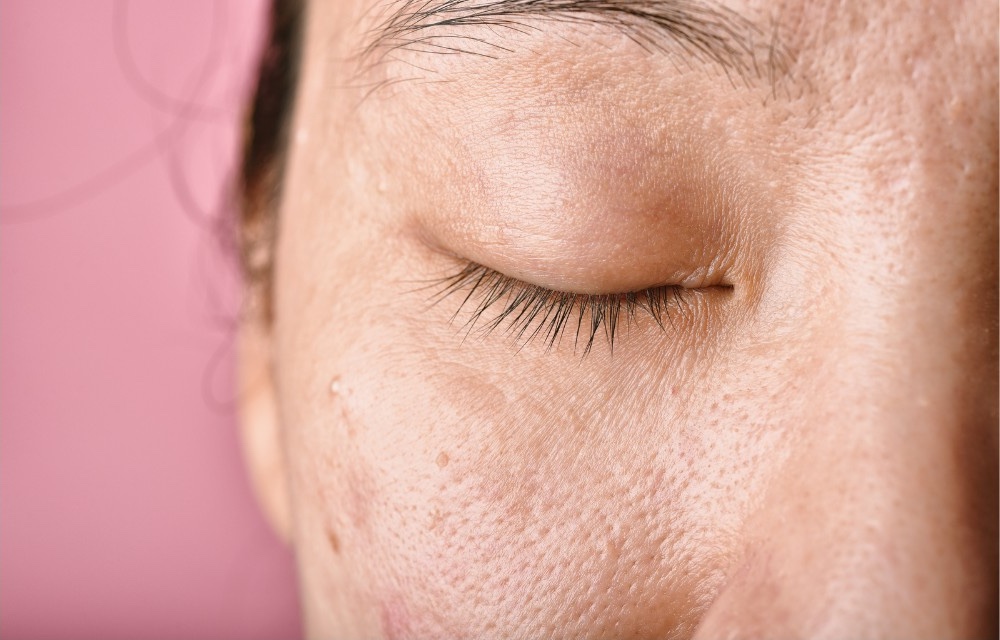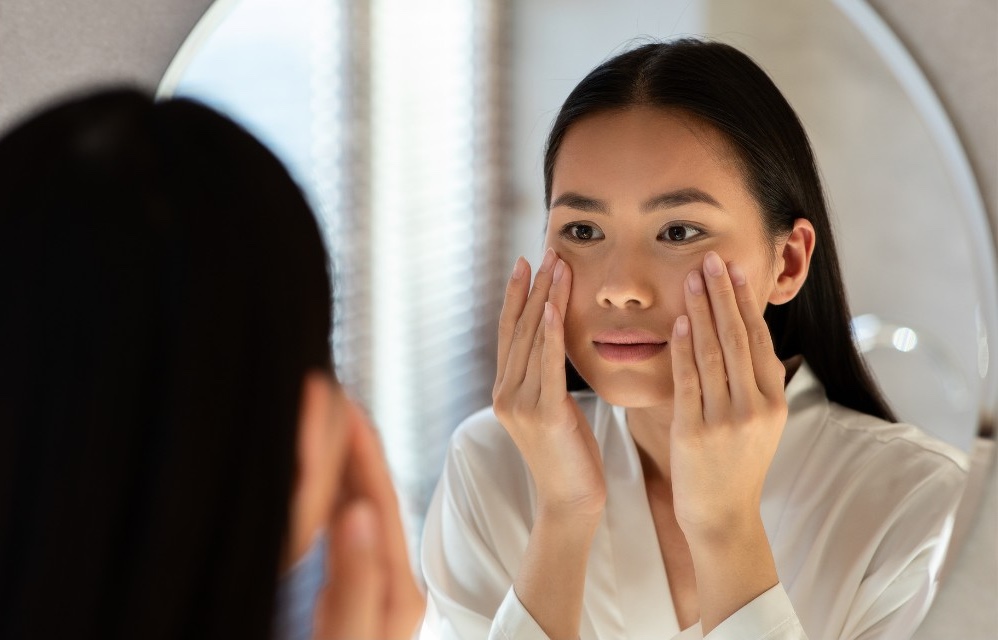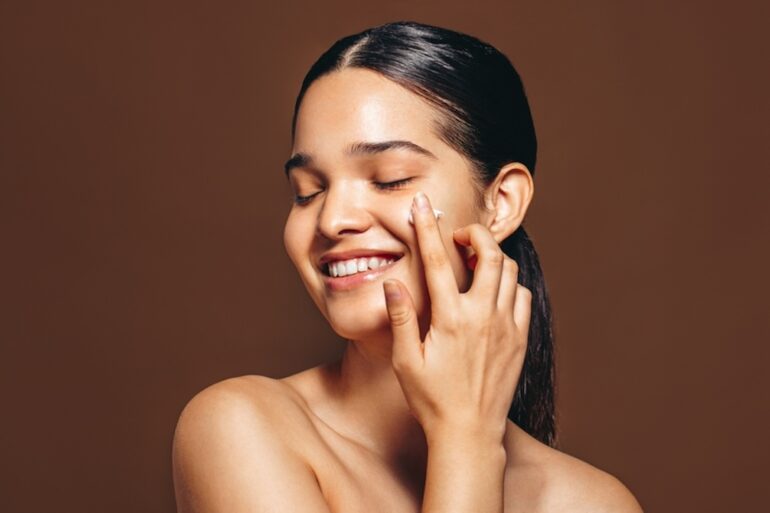The goal isn’t just to treat them, but to keep them from coming back.
You may have just forgotten to apply sunscreen on the beach before basking under the sun, or acne has left behind dark spots and patches on your face. Whatever the reason, hyperpigmentation can be frustrating. And although it is common and generally not harmful, wanting it all gone is totally understandable.
Hyperpigmentation, as the term suggests, is a specific type of pigmentation characterized by an overproduction of melanin, a molecule that gives color to our skin, hair, and eyes. It appears as darker spots or patches, especially on the face, which can really be distressing if you don’t know how to treat them or cover them up with a foundation and concealer.
Besides, Filipinos need to put a little more effort into it, as Asian skin is more prone to hyperpigmentation than other skin types. According to Dr. Mara Huber of the Philippine Dermatological Society, individuals with medium to darker-colored skin types, such as Filipinos, are more prone to develop this skin condition than lighter skin types “because the former have more melanin to begin with.”

What causes dark spots?
One of the most common causes of hyperpigmentation is prolonged sun exposure, which is why sun protection is a must for everyone. But it’s definitely more than that. Dr. Jennie Diaz, founder and medical director of Skin 101, delved into the causes during the media launch of Elizabeth Arden’s newest spot-correcting capsules in Raffles Makati on June 9.
The dermatologist began, “Dark spots are primarily caused by sun exposure, but there are also factors that you must consider—there’s aging. You know how you’re flawless as a child and as you age, you develop spotty skin or discoloration? That’s expected.”
Related story: Dermatologist-approved ways to slow down skin aging
Related story: Shiseido’s new anti-aging line is a game changer for those who missed the genetic jackpot
Adult women are also more prone to hyperpigmentation due to hormonal changes, which primarily occur during menstruation, pregnancy, menopause, and when taking birth control pills. This is because certain hormones, like estrogen and progesterone, can stimulate melanocytes to produce more melanin, resulting in darkening of the skin.
Diaz added that dark spots can also come from acne and wounds that turn into scars, as well as exposure to light of any kind, from the sun to lamps and, yes, even gadgets.

Focus on prevention, not just the cure
Now, before you start hiding away from basically everything, Diaz says that there is no need to panic, as dark spots are not permanent. The key, she said, is focusing on how to get rid of them and, more importantly, keep them from coming back.
You can start by looking for products with Vitamin C, hydroxy acid, and retinol, which the dermatologist said are all “medically validated to work.” She added that “there are oral capsules that you can take—both for sun protection and for lightening—and, of course, there are clinical treatments that can work.”
“There are many, many options available ‘cause we are living in the 21st century. This is AI, and AI-skin level as well,” she continued. “Whether you use a topical or an oral product, all of these are made to remove your pigmentation. But, there’s one thing that you have to remember: you also have to prevent them from coming back. We live in a tropical country, so prevention is key. Everything out there can erase, but you need to prevent.”

Sure, dark spots are not permanent, but Diaz said they are likely to return even after treatment because of lifestyle factors. She explained: “If you’re genetically predisposed to getting hyperpigmentation, unfortunately, what you erase, you’ll just reclaim. If you’re taking the pill again, you’ll get the pigmentation again. If you keep getting pimples, you’ll get the dark spots again. If you fall, you get a wound, you’re going to get a dark spot. And if you go to the beach without sunblock, you will get melasma.”
Related story: Your burning questions about sunscreen, answered
Related story: Summer skin problems? Here’s what you need to refresh your beauty routine
Combat hyperpigmentation the Elizabeth Arden way

To achieve blemish-free skin, it would be best to upgrade your skincare routine with products that not only fade but also stop dark spots from sneaking up on you again. A product that has been attracting the attention of skincare enthusiasts for quite some time now is Elizabeth Arden’s Visible Brightening Clearly Radiant Spot Correcting Capsules.
The serum promises to fade dark spots, brighten the complexion, and even out its texture—pretty much everything we need to restore our skin’s vitality. It is designed to correct, visibly brighten, and refine the skin, all while tackling dark spots and post-acne marks.

What makes Elizabeth Arden’s spot-correcting capsules different from other dark-spot correctors is that they are plant-based and come with ingredients more powerful than most skincare products. Each capsule comes with Vitamin C 178 times stronger than traditional Vitamin C.
It also has five skin brighteners, including SymWhite 377, which is a “product that comes from pine trees and fades dark spots,” according to Diaz. There’s also the ingredient called SymBright, which is designed to brighten and hydrate the skin. Phyto-Ceramides, meanwhile, strengthen the skin’s barrier. “It will close the barrier of your skin and by doing so, you’re less likely to get pigmentation. You’ll less likely to get irritation, red spots from the products,” Diaz explained.
With its ability to combat the cause of hyperpigmentation, the Elizabeth Arden Visible Brightening Clearly Radiant Spot Correcting Capsules serve as a comprehensive solution across all skin types for a glowing, healthy skin. It is available in bottles of 30 capsules (P4,800) and 60 capsules (P8,470) in Rustan’s department stores in Makati, Alabang, Cebu, and online at Rustans.com, Lazada, Shopee, and Zalora.
Related story: Here’s what forehead wrinkle patches actually do for your skin
Related story: If you’re traveling in winter, here’s how to prevent dry, cracking skin








